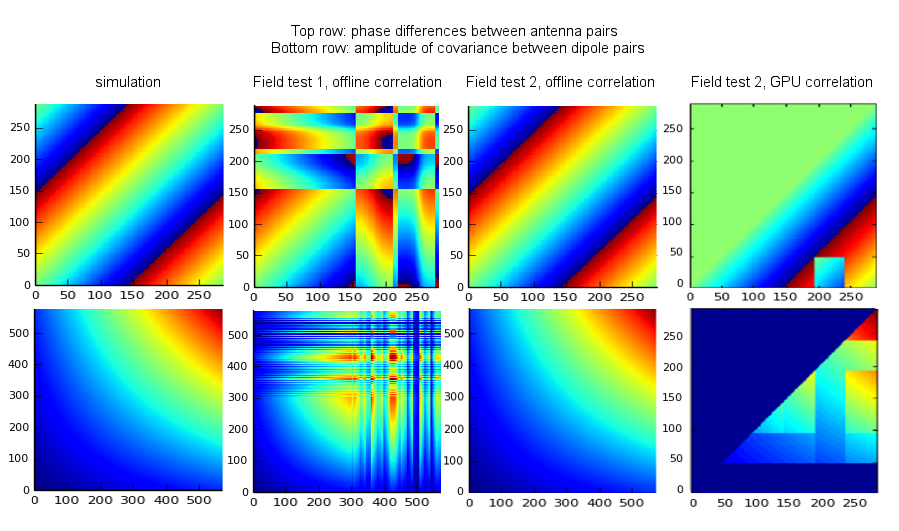Daily Image
26-11-2014The AARTFAAC correlator is ready to go!
| Submitter: | Daniel van der Schuur and Peeyush Prasad |
| Description: | The AARTFAAC(*) correlator that is currently under development will correlate all 288 dual polarization antennas of the six LOFAR superterp stations. The signals arrive with an aggregated bandwidth of 30Gbps. At each station, UniBoards collect subband data from the LOFAR ring interface and feed the formatted data to the GPU correlator. The UniBoards format and re-order the data such that the correlator can perform optimally. To verify that each antenna signal arrives at the GPU machine correctly, a simulation was made to predict what the phase differences and amplitudes of dipole cross covariances should look like when the dipole inputs are complex sinusoids with a fixed phase and amplitude relationship between themselves. The resulting plots are in the left column and show the amplitude and phase gradients across antennas as fed in. The goal of the first field test was to produce the same plots as the simulation, but with 288 waveforms generated by the RSP boards in the field. This resulted in the pieces of modern art in the second column. It is caused by setting the amplitude of the waveform generators too high, leading to clipping. The correct levels were applied in the second field test, which proved that all antenna signals were arriving at the GPU machine correctly. Until now, the correlation was done offline, and for one time-sample only. The next step was to let the GPU correlator produce the same plots, at full speed. Some artifacts can be seen in the right column, which were traced to dropped packets in the correlator code. This was fixed by tweaking the network and interrupt subsystems of the GPU machine. So, the AARTFAAC correlator is ready for action. Stay tuned! (*) This elegant acronym stands for All-sky Transient Detector for LOFAR |
| Copyright: | ASTRON |
| Tweet |  |
